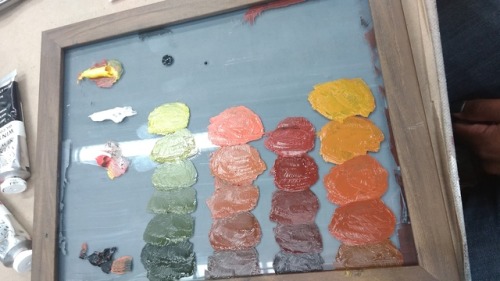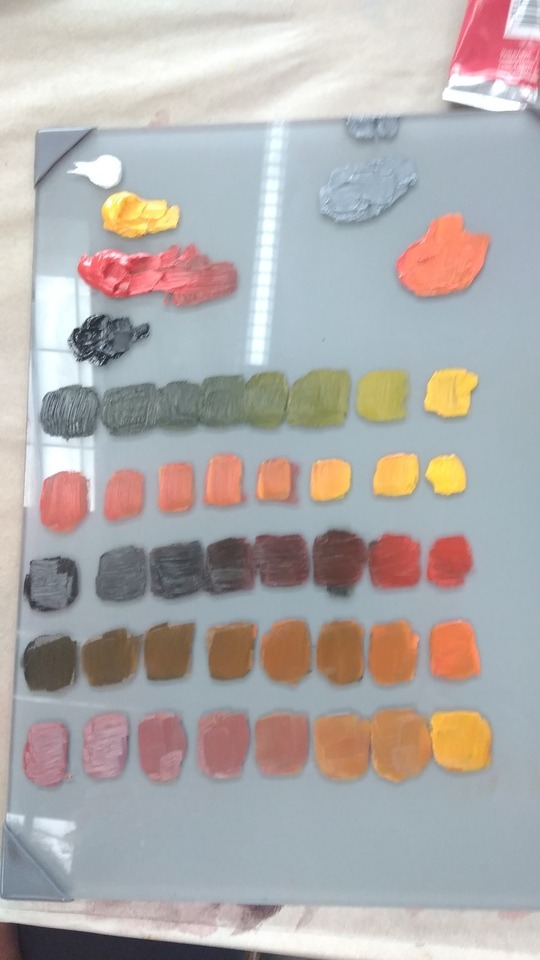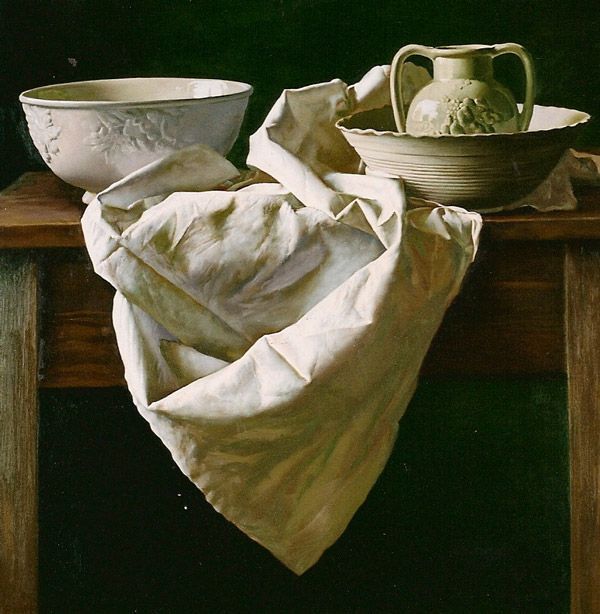So now that you've mastered using red and black you're going to move on to using yellow and blue! You've now suddenly got a full palette at your fingertips and will be able to make an unbelievable amount of colors just from these three. Much like how all of music is based off just 12 notes, all the colors of the world are made from only a handful of primaries.
You may have wandered into art stores over the years, and gazed up at that big wall of paints in a variety of exotic colors and found yourself at a loss of where to start. Just let me remind you, that the more limited your palette, the easier it's going to be to make color harmonies. Basically this means that if you mix a green, it's going to "go" with your other colors better if you mix it with those colors. For this reason, we will be using only the primaries and the colors we can make from these during the beginning of this course.
So lets get into it. For today's lesson we'll start off by creating 4 different value scales. These will be done in green, brown, orange, and red. You can look at the examples below to see how these look. Did I mention that you should be documenting all of your progress in your blog? And that you also need to be doing some research into the materials and techniques of other artists, as well as creating a collection of inspirational painters who you look up to? Yeah, so do that. I can't stress enough how important it is to document your work and organize it. It may not seem apparent now, but as you collect more images, and progress you'll be able to see things come together more and more.
Now I'm going to introduce a type of color which is often used in painting and that is something called "Chromatic Greys" . A chromatic grey is a color that has all three of the primaries in it. Basically, you can mix up your red, yellow, and blue and you'll end up with a muddy grey color, from this grey, you can push the color more red, or yellow, or blue, or whatever. It was actually common for master painters such as Rembrandt to largely paint with greys that have subtle fluctuations towards one color or another.
Experiment with making a big pile of muddy grey, and then create a small abstract composition with subtle fluctuations in a variety of colors like the example above.
Paintings are often composed of chromatic greys with areas of color that pop. Because the more saturated colors draw our attention, we often don't see large areas of a painting that are done in these greys.
Once you've completed your small abstract composition in chromatic greys, we'll move on to another concept which you'll find often in a variety of paintings. This is the idea of hard edges and soft edges. For this assignment you'll be shown how to do dry brush blending . Dry brush blending allows you to blend two colors that are sitting right next to each other by utilizing a dry brush. You can see below how this can be done.
Now, when looking at a lot of different paintings you'll start to notice that they're all made up of hard edges and soft edges. This is really apparent in drapery studies, and during the renaissance apprentices were told to do studies of drapery for precisely this reason. Look at the image below and try to find the hard edges, and the soft edges, and think about how the light and form is illustrated by utilizing these two different methods of applying paint.
Zubaran
Now, for the final exercise today we'll be filling a canvas with nothing but clouds. These clouds can be imaginary, or they can be done using the image below. The goal of this exercise is to get as much experience as you can playing with hard edges and soft edges.
Student work examples
Bonus Painting! If you're looking for extra credit, then attempt the crumpled paper challenge, and simply crumple up a white piece of paper, put it underneath a strong lighting source, and then paint it! It's all hard edges and soft edges and is a real challenge for artists of all experience levels.
For next week you will need to bring in an image of a small natural still life from your daily life. Try not to pose these photos, but just look around where you live, and take a bunch of photos of small objects throughout your room. Often these accidental still lifes are more interesting than those which are intentionally created. You will painting from these next class, and you must bring in a printed copy of your image in order to complete the next assignment. So come to class prepared with a printed copy of your image in hand!









